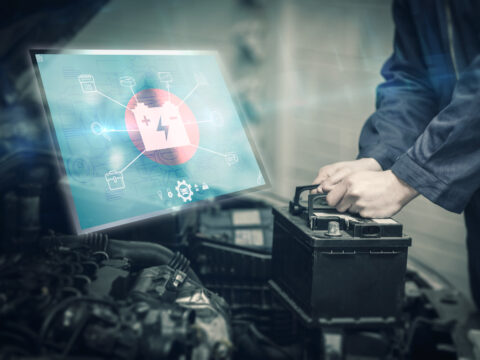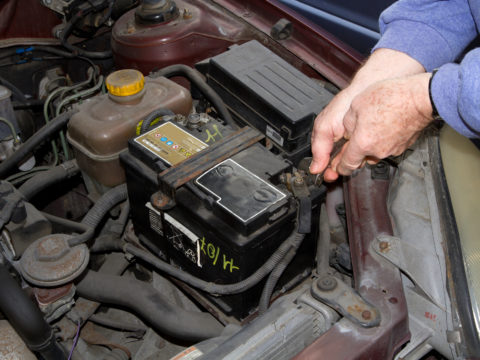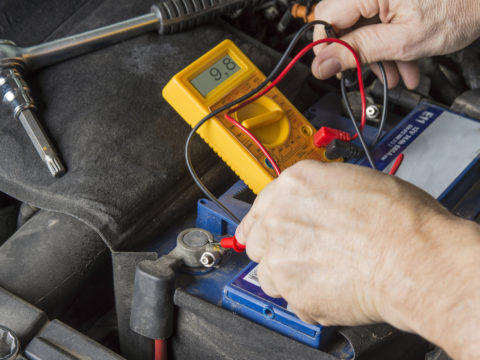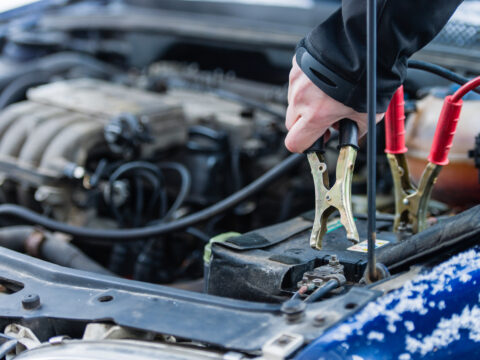There are several lights on a car’s dashboard that come on to tell you if there is something wrong. One of those lights is the battery light. Many people assume that this signifies a problem with the battery only. This is not the case. It means the car is getting the wrong amount of power and could be caused by several sources.
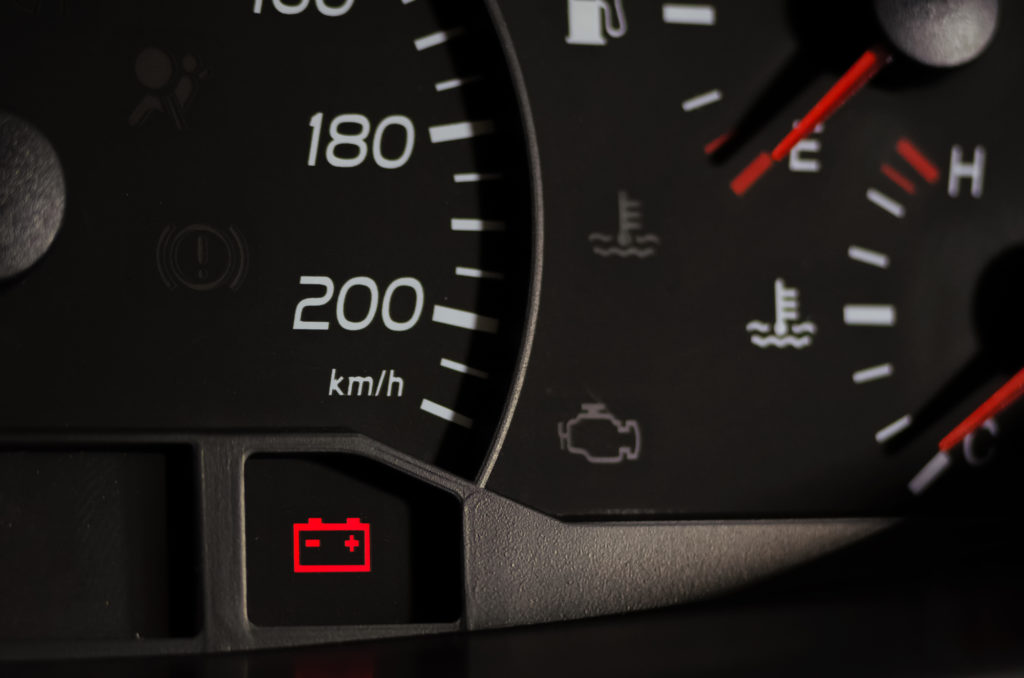
Contents
Battery Light on Dashboard Meaning
When the battery light comes on, it simply means that your battery is not receiving enough voltage to power all the car’s electrical needs. A battery gets this voltage from several different systems on the vehicle.
There are several symbols on a car dashboard; each means something different. The battery light looks like a Lego block with a minus sign on the left and a plus sign on the right side.
6 Reasons Why the Battery Light Could be On
A car battery gets its power from more than one source in the car. This light comes on if there is any type of power depletion to the electrical system. When the battery light is on, simply buying a new battery may not solve the problem.
1) Faulty Battery
Car batteries have power cells that can go bad over time. A typical car battery has six power cells; each has two plates, one plate is lead, and the other is lead oxide. Sulfuric acid is used to cause a chemical reaction to produce power. Each power cell produces two volts of power, thus providing twelve volts of power to your vehicle.
Batteries are made this way so that other parts of the engine or an external source can recharge the battery.
If there is a problem or malfunction with one of the power cells, your vehicle will have 2 volts less power. If your car is not getting the full twelve volts of power, then the battery light will come on.
It isn’t possible to fix a broken power cell due to the nature of the sulfuric acid used to create the power. If this occurs, you will have to buy a new battery.
2) Malfunctioning Alternator
The alternator changes chemical energy into mechanical energy, and it feeds the mechanical energy into the car battery to keep the battery charged while the car is running.
If the alternator in the vehicle goes out, your battery will not charge. When the change runs out, you will not be able to drive the vehicle or even start it.
3) Loose Battery Terminals
Every car battery is connected to the alternator and other engine parts through special metal connectors called terminals. The terminals are connected to the two battery nodes with a circular ring fastened with a bolt.
If the bolt isn’t tight enough or the terminal breaks, there will be an interruption in the power flow between the battery and the other engine components.
4) Faulty Wiring
As in all electrical systems, wires carry the current to the parts of the engine that need electricity to work. If one of the wires gets broken or frayed, the required power will not make it to the point where it is required.
5) Worn Out Serpentine Belt
Another vital part of the car’s power system is the serpentine belt. The serpentine belt connects the alternator, power steering pump, air conditioning compressor, and in some models, the water pump is included.
If that belt wears out of breaks, then the enter power system of the vehicle will stop working due to the lack of connection and lack of power.
6) Faulty Ground Strap
The ground strap gives the electrical current a place to leave the powertrain system safely. The headlights will usually be adversely affected when the strap or wire goes bad.
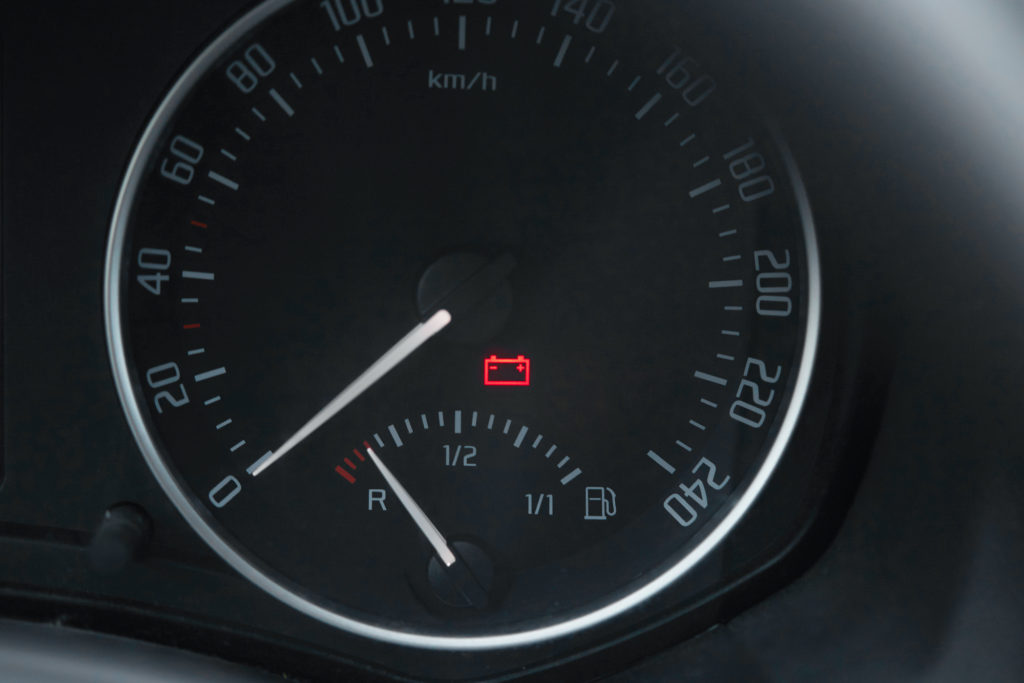
What to Check When You Notice the Battery Light
You should check some of the different components mentioned above to determine the cause of the power depletion.
Some of these components should be checked by a certified mechanic for safety reasons.
1) Check the battery installation and compatibility.
When your car has electrical problems or won’t start, the first thing everyone checks is the battery.
Car batteries only last 3 to 5 years, while if you properly maintain your car, it can last for much longer. There is a good chance you will go through 2 or more batteries during the lifetime of your vehicle, and batteries wear out for various reasons.
However, if you leave your lights or some other electrical mechanism on in the car, it can cause your battery to go dead. If that is the case, you can charge it up with a charging system or jumper cables.
If it does not take a charge, there is likely something wrong with the battery, and you need a new one.
Ensure that the new battery is the correct one for your make and model car. There are different types and sizes of car batteries.
2) Check the alternator and the alternator components.
If you charge the battery and then drive the car, A certified mechanic should check it should retain its charge. If it does not hold a charge, the alternator may not be charging it properly.
A great way to check the alternator, if the car runs, is to switch the car on, then carefully remove the positive battery terminal. If the car dies, then there is likely something wrong.
You can also test the alternator using a multimeter to determine the electrical output.
If your car is not running, have a certified mechanic check the alternator for you.
3) Check the Wiring
Sometimes electrical problems are caused by shorts or breakage in the wiring. I should be able to see the wires and follow them from the battery to their connection point in various places under the hood. You may need a flashlight to see down into the inner workers of the engine.
4) Check the Fuse Box
There is a fuse box under the hood in most cars to give extra power to the electrical components where needed. If there is a power surge or something like that, a fuse my blow out. Check the fuse to the electrical part that is not working.
Is It Safe to Drive With The Battery Light On?
It is not a good idea to drive with the battery light on. If your car experiences complete power failure while the vehicle is moving can cause all sorts of issues. A power failure can cause the engine to stall, leaving you stranded, possibly in the middle of the road.
How Long Can You Drive After the Battery Light Comes On?
Once the check battery light comes on, you have roughly thirty minutes to an hour before the car will stall. If you can pull over, try to do so as quickly as possible after the light comes on.
What to Do if the Battery Light Stays On?
If the check engine light illuminates while you are driving, turn off everything that uses power except your headlights to conserve power. Get to the nears safe place and pull over to get help. You do not want to be driving if the engine stops working.

